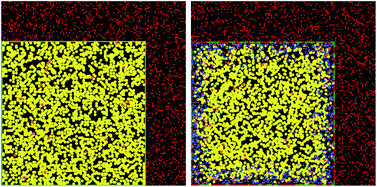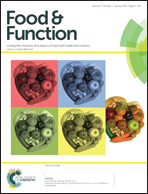Refining in silico simulation to study digestion parameters affecting the bioaccessibility of lipophilic nutrients and micronutrients
Abstract
Despite the considerable number of in vivo and in vitro studies on the digestive fate of lipophilic nutrients, micronutrients, and bioactives, the effects of the structure and composition of foods on the physicochemical mechanisms of luminal digestion are still poorly understood. Studying them is indeed complex because the number of parameters is high and many of them are interdependent. To solve this problem, an in silico simulation based on a multi-agent system was recently proposed to study the intestinal bioaccessibility of lipophilic nutrients and micronutrients from a single oil droplet. The roles of lipolysis and solubilization in bile salt were included. The effects of several food and digestion parameters were in line with those reported in the experimental literature. The goal of the research reported in this new article was to include more digestion parameters in the simulation in order to make it more realistic against complex cases. This was done in one specific digestion condition reflecting in vitro experiments, using droplets of tricaprylin or triolein containing vitamin A. The structure and principles of the original model were kept, with independent local modifications in order to study each factor separately. First, a gastric step was added where lipolysis took place, and only a marginal effect on the following intestinal step was found. Then, the chemical form of vitamin A, either non-hydrolyzed retinyl ester or retinyl ester instantly hydrolyzed into retinol, was investigated by considering different localizations in the droplet, resulting in a higher bioaccessibility for the retinol. The case of a mixture of tricaprylin and triolein indicated an influence of the oil phase viscosity. The consideration of mixed micelles compared to simple bile salt micelles was also investigated, and resulted in a higher vitamin A bioaccessibility, especially with triolein. Finally, a full model including the most influential parameters was tested to simulate the digestion of triglyceride–limonene mixtures, giving bioaccessibility trends in very good agreement with the literature.


 Please wait while we load your content...
Please wait while we load your content...